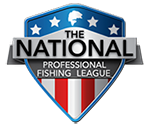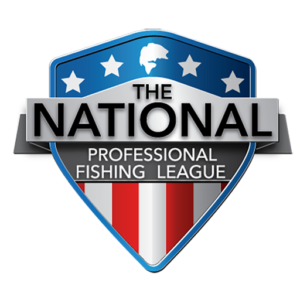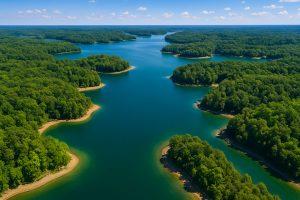Featuring Chad Marler | Photos by Tanner & Travis Lyons
Hometown: Jasper, Texas
Technique: Summertime Offshore Jig Fishing
History: The jig is one of the oldest and most versatile of bass lures. You can crawl it, hop it, drag it, swim it, stroke it, or even deadstick it. It may be impossible to fish a jig “wrong,” but in the summer—when the water passes 80 degrees—one of the very best ways to catch bass is by working offshore brush piles with a football jig.
Highlights: I’ve done really well around home in Missouri and (more recently) Texas by fishing a football jig in offshore brush. It’s a pattern that not many anglers pursue, probably because it’s a bit advanced and outside their comfort zone. But if you have a good working knowledge of your electronics, it’s a great way to catch big bass that others miss … and it’s not the kind of slow fishing that many anglers associate with deep water and summertime.
When: This pattern kicks in after the shad spawn—in June, July and August—when water temperatures get above 80 degrees.
Where: Jigging offshore brush piles for summertime bass works anywhere you have offshore brush—usually manmade brush piles or cane piles made of bamboo. The sweet spot in terms of depth seems to be from about 20 feet to nearly 30 feet, and that depends on the conditions on the body of water you’re fishing. In clear water, it might be a little deeper. In dirty water, it will likely be a little shallower.
Lures: My favorite jig for this technique is a 3/4-ounce Dirty Jigs Tour Level Football Jig in Green Pumpkin or Black & Blue. For a trailer, I like a green pumpkin or black and blue craw-style soft plastic, and I experiment with body style until I find what they want that day. Sometimes I use a craw with small pinchers. Other times they want big, flappy claws, and sometimes they go for kicking-style claws. No matter which one I’m fishing, I thread the bait onto the shank of the jig hook and onto the keeper.
Mods: I trim the skirts on my jigs to just below the bend of the hook, and I spread the bristles on the weedguard—just a little—to give me broader protection against the limbs of the brush pile. If you spread them too much, the weedguard will lose its effectiveness.
Line: I use 17-pound-test Seaguar AbrazX fluorocarbon.
Rod: For this technique, I like a long, stout, sensitive rod that allows me to make a long cast, feel the bite, and muscle a big fish out of the brush before she can wrap me up and break me off. I use a 7-foot-5 extra-heavy fast rod in Stik5’s Elevate Series that they call “The Hammer.” It’s the right tool for the job.
Reel: Quality baitcaster with a gear ratio of 7.5:1 or faster to pick up line quickly and get fish out of the brush.
Basics: I use my side-imaging to idle long, main-lake points or deep main-lake drains looking for brush piles. It’s important that you don’t drive the boat over the fish you’re targeting. If you do, they’re going to scatter, and it may be a long time before they regroup in the same spot.
If you can see crappie or other baitfish in the brush pile, that’s a sign of productive cover. Bass are rarely far from their food source, and a good brush pile is a grocery store!
I usually keep my boat about 80 to 85 feet from the cover so I can make a long cast into any wind or current. I want to be as far away as possible and still make a comfortable, accurate cast. That distance is important because you don’t want the bass to know you’re there. You don’t want them to hear the trolling motor or any waves slapping against the hull.
Once I’m positioned, I’ll analyze the shape and size of the brush pile and be sure to hit the edges before putting my jig right into the heart of it. I want to pick off the “easy” fish before casting into the center and risking disturbing everything there.
I’ll make my cast, let the bait settle to the bottom and begin my retrieve. I generally crawl or drag the bait along the bottom until I feel it contact the brush. Then I slow it down, pull it over the limb, and let it free fall straight down on a semi-slack line. Bites usually come on the fall. That’s my default retrieve, and it works most of the time.
Another retrieve I like starts the same way, but as I lift the jig and feel it contact the limb, I’ll pause for a second and bang it against the limb a few times. That often gets their attention and draws a strike. If not, I ease the bait over the limb, let it free-fall to the bottom, and do it all over again until I’m clear of the brush.
When you feel the bite, set the hook hard and fast. You have to get that fish moving and out of the brush quickly or you’ll lose it. This is a great big fish pattern!
Advanced: Don’t spend a lot of unproductive time on one brush pile. If you haven’t gotten bit in 10 or 12 casts, they’re not active, and it’s time to try a different brush pile. I might fish as many as 50 in a day, rotating through them and often fishing the same ones two or three times, looking for active fish.
Chad Marler – Angler Profile





